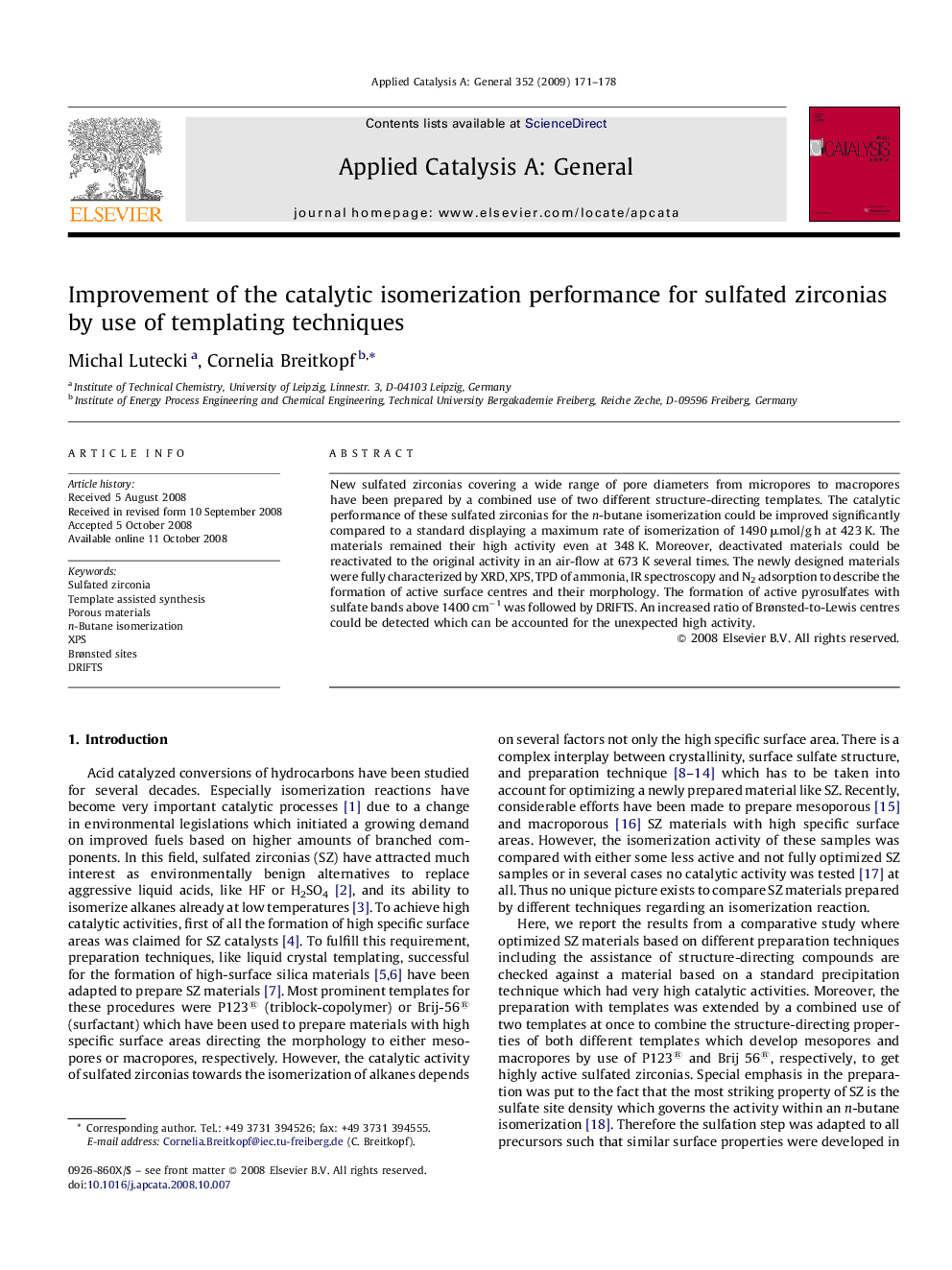| Article ID | Journal | Published Year | Pages | File Type |
|---|---|---|---|---|
| 43166 | Applied Catalysis A: General | 2009 | 8 Pages |
New sulfated zirconias covering a wide range of pore diameters from micropores to macropores have been prepared by a combined use of two different structure-directing templates. The catalytic performance of these sulfated zirconias for the n-butane isomerization could be improved significantly compared to a standard displaying a maximum rate of isomerization of 1490 μmol/g h at 423 K. The materials remained their high activity even at 348 K. Moreover, deactivated materials could be reactivated to the original activity in an air-flow at 673 K several times. The newly designed materials were fully characterized by XRD, XPS, TPD of ammonia, IR spectroscopy and N2 adsorption to describe the formation of active surface centres and their morphology. The formation of active pyrosulfates with sulfate bands above 1400 cm−1 was followed by DRIFTS. An increased ratio of Brønsted-to-Lewis centres could be detected which can be accounted for the unexpected high activity.
Graphical abstractThe n-butane isomerization over sulfated zirconias was investigated for newly designed nanostructured materials derived by a template assisted route which diplay an improved conversion to iso-butane close to the thermodynamic limits at 423 K.Figure optionsDownload full-size imageDownload as PowerPoint slide
